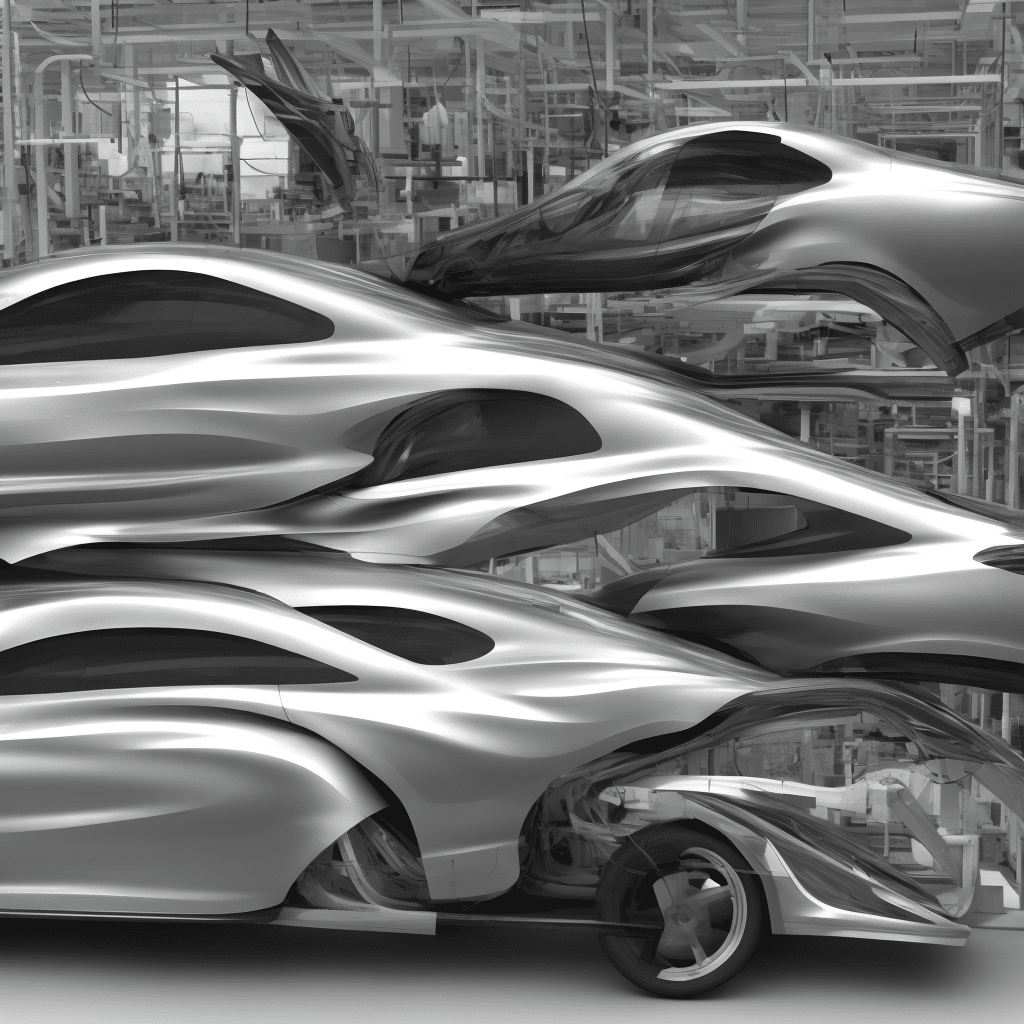How Does Aerodynamic Design Affect a Car’s Fuel Efficiency?

The impact of aerodynamics on the performance and efficiency of a vehicle is an essential consideration in the automotive industry. With the rising cost of fuel and the increasing demand for energy-efficient vehicles, understanding how aerodynamic design can influence fuel consumption is more critical than ever. In this article, we will take a closer look at how the principles of aerodynamics are applied in vehicle design and how they can make cars more energy-efficient, reduce drag, and enhance overall performance.
The Basics of Aerodynamics and Vehicle Design
Aerodynamics is the study of how air moves around objects. In the context of vehicle design, it plays a pivotal role in determining how smoothly a car can move through air. When a car is in motion, it faces resistance from the air it is displacing; this resistance is known as ‘drag’. The main goal of aerodynamic design is to minimize this drag to enhance the car’s speed and fuel efficiency.
A voir aussi : What Steps Should You Take to Protect Your Car’s Undercarriage from Salt Damage in Winter?
To understand the significance of aerodynamics in car design, consider the wind. When you’re driving against a strong wind, your car needs more power to maintain the same speed, thus consuming more fuel. Similarly, a car with poor aerodynamic design will face more air resistance, leading to increased fuel consumption.
By applying the principles of aerodynamics, car designers aim to create vehicles that ‘slice’ through the air with minimal resistance. This includes designing sleek and streamlined vehicle bodies, optimizing vehicle size and shape, using lightweight materials, and incorporating various aerodynamic features like spoilers and air vents.
A lire aussi : How Can Installing a Roof Box Impact Your Vehicle’s Fuel Efficiency and Aerodynamics?
The Impact of Aerodynamic Design on Fuel Efficiency
One of the most tangible benefits of aerodynamic vehicle design is improved fuel efficiency. A car with a high drag coefficient – dictated by factors such as shape and size – will need more energy to move at a given speed compared to a car with a lower drag coefficient. This additional energy is typically derived from burning more fuel, leading to higher fuel consumption.
By reducing the drag, aerodynamic design directly contributes to reducing a vehicle’s fuel consumption. A well-designed car can navigate the air more efficiently, requiring less energy to maintain speed and motion. This reduction in energy demand translates to less fuel being burned, ultimately leading to cost savings for the driver and a smaller carbon footprint for the car.
Moreover, aerodynamic design can also enhance a vehicle’s stability and handling, especially at high speeds. Features such as spoilers and diffusers can help manage airflow around the vehicle to reduce lift and ensure the car remains grounded, providing a safer and more comfortable driving experience.
How Car Manufacturers Implement Aerodynamic Design
While the concept of aerodynamics might seem quite technical, its implementation in car design is a blend of science and art. Firstly, manufacturers use computational fluid dynamics (CFD) simulations to understand how air will flow over a proposed car design. These simulations help identify potential areas of high drag and suggest modifications to optimize airflow.
Following the initial design stage, car manufacturers build scale models of the new design and test them in wind tunnels. These wind tunnel tests provide real-world verification of the CFD simulations and may reveal additional areas for improvement.
Once an optimized design is finalized, the car goes into production. But the role of aerodynamics doesn’t stop there. Even after production, vehicles are subjected to ongoing tests and refinements to ensure they continue to deliver optimal performance and efficiency.
Evolution and Future Trends in Aerodynamic Car Design
Over the years, aerodynamic design in vehicles has evolved to become one of the critical considerations in the automotive industry. Today, not only sports and high-performance cars, but everyday vehicles are also designed with aerodynamic efficiency in mind.
Looking ahead, the importance of aerodynamics in vehicle design is set to grow even further. As the world moves towards more environmentally friendly transportation options, the need for energy-efficient vehicles is paramount. In this context, aerodynamic design has a significant role to play.
Electric vehicles (EVs), in particular, stand to benefit greatly from aerodynamic design. With their reliance on stored electricity to power their motors, EVs need to be as energy-efficient as possible to maximize their range. Therefore, expect to see more EVs sporting sleek, streamlined designs in the future.
To sum up, the aerodynamics of a vehicle is a crucial determinant of its fuel efficiency. By reducing air resistance and drag, car manufacturers can create vehicles that deliver superior performance and energy efficiency. Whether you’re a car enthusiast or an average driver, understanding the principles of aerodynamics can help you appreciate the design and function of your vehicle on a deeper level.
These principles are also increasingly shaping the future of the automotive industry, driving the design of the next generation of energy-efficient vehicles. So, whenever you see a sleek new car model, remember that it’s not just about aesthetics – there’s a science behind it and its fuel efficiency.
Advanced Aerodynamic Features Increasing Fuel Efficiency
Aerodynamic features are specialized design elements that manufacturers implement to further enhance fuel efficiency and performance. These are not merely cosmetic additions but play a significant role in reducing drag and increasing aerodynamic efficiency.
For instance, spoilers, which are often seen on sports cars, reduce the lift and turbulence at higher speeds by managing the airflow over the back of the car. This reduces the overall air resistance held by the vehicle, allowing it to move more efficiently and consume less fuel.
Similarly, air vents help cool down the engine and brakes, ensuring optimal performance and longevity. At the same time, properly designed vents can channel the airflow around the vehicle, reducing the aerodynamic drag and boosting fuel economy.
Other notable features include underbody trays and diffusers, which manage the airflow beneath the car. These elements help smooth turbulent air flow, further reducing the drag vehicle experiences and contributing to better fuel efficiency.
Manufacturers also pay attention to the frontal area of the vehicle. A smaller frontal area presents less surface for the air to push against, leading to less resistance and, subsequently, less fuel consumption. That’s why many energy-efficient cars sport sleek, streamlined front designs.
In essence, every small detail in car design, from the shape and size of the side mirrors to the design of the wheel arcs, can influence the aerodynamics of a car. Manufacturers use wind tunnels to test and refine these features, ensuring they contribute to the vehicle’s overall fuel economy.
Conclusion: The Art and Science of Aerodynamics in Car Design
The art of car aerodynamics goes beyond aesthetic appeal. It’s a meticulous process of science and engineering aimed at increasing fuel efficiency and enhancing overall vehicle performance. This is achieved by minimizing air resistance and aerodynamic drag that the vehicle faces while in motion.
Through an intricate process of design, testing, and refinement using CFD simulations and wind tunnel tests, manufacturers are continually pushing the boundaries of aerodynamic efficiency. The role of aerodynamics in car design is now more critical than ever, especially with the increasing demand for fuel-efficient and environmentally-friendly vehicles.
As we move into the future, the principles of aerodynamics will continue to guide the design and production of vehicles. The focus on reducing fuel consumption and enhancing efficiency will only intensify, especially with the rise of electric vehicles.
To quote a popular saying, ‘form follows function’. In the world of vehicle design, this statement holds truer than ever. The sleek, streamlined vehicles we see on the roads today are not just visually appealing but are carefully designed to cut through the air with minimal resistance, offering superior performance at high speeds and better fuel efficiency.
While everyday drivers may not delve into the complexities of vehicle aerodynamics, understanding these principles can certainly help appreciate the science behind the design of their cars and the efforts taken to boost fuel efficiency. As we look at the vehicles of the future, remember that every curve, vent, and feature has a purpose – to achieve the perfect balance between performance, efficiency, and aesthetics.
